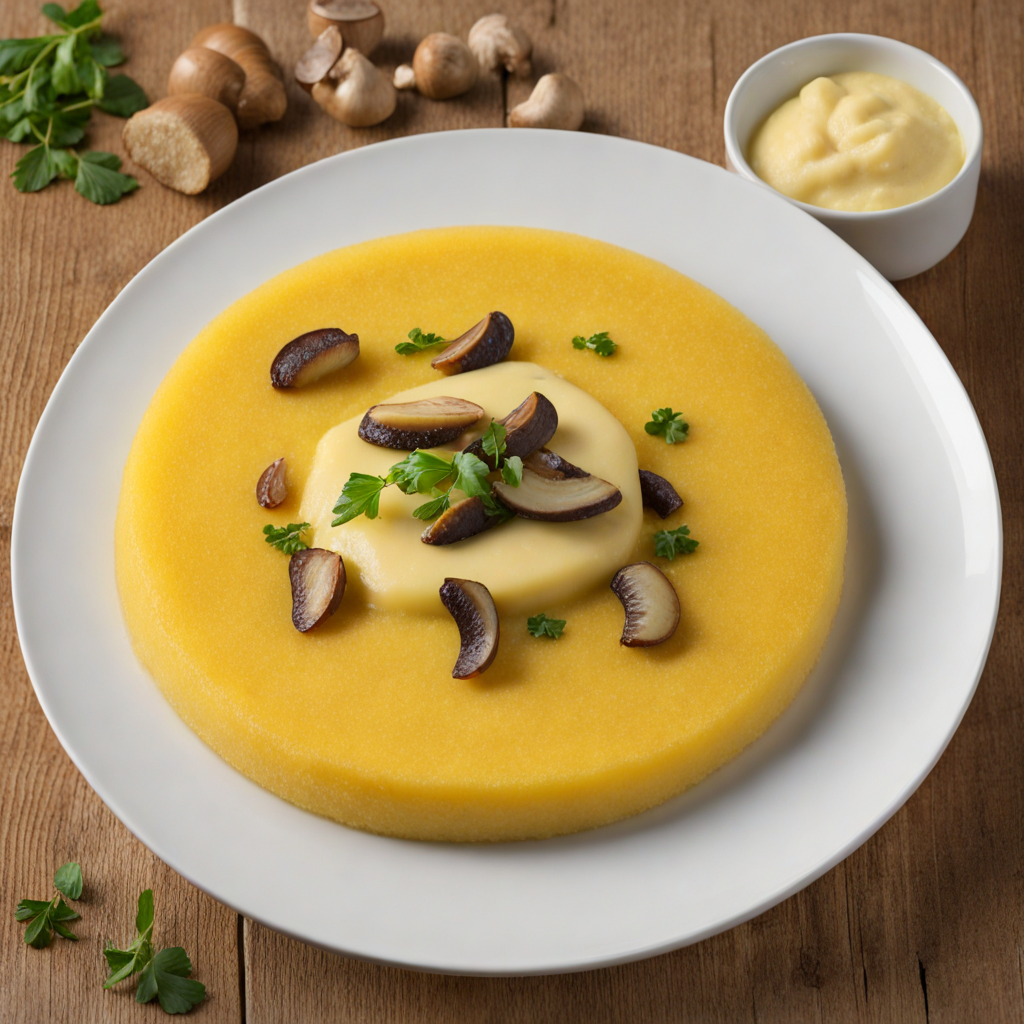Rösti
Rösti is a traditional Swiss dish that showcases the humble potato in a delightful and crispy manner. Originating from the canton of Bern, this versatile dish is often likened to hash browns, but it possesses its own unique character. The main ingredient, grated potatoes, are typically parboiled and then sautéed until golden brown and crispy on the outside, while remaining soft and tender on the inside. The result is a beautifully textured dish that can be enjoyed at any time of day, whether for breakfast, lunch, or dinner. One of the appealing aspects of Rösti is its adaptability. While the classic version features only potatoes, variations can include ingredients such as onions, cheese, or herbs, adding layers of flavor and complexity. Some might even incorporate bacon or other meats for a heartier option. This flexibility allows each cook to tailor the dish to their liking, making it a beloved staple in Swiss cuisine that can be found in many households and restaurants alike. Rösti is often served as a side dish, complementing a wide array of main courses, from succulent meats to fresh salads. Its crispy exterior and fluffy interior create a satisfying contrast that enhances any meal. Additionally, Rösti can be enjoyed on its own, perhaps topped with a fried egg or accompanied by a dollop of sour cream, offering a delightful experience for those looking to explore the delectable flavors of Swiss cuisine.
How It Became This Dish
The History of Rösti: Switzerland's Beloved Potato Dish #### Origins: The Birth of Rösti Rösti, a simple yet beloved dish originating from Switzerland, is often referred to as the culinary emblem of the country. Its roots can be traced back to the rural communities of the canton of Bern in the early 19th century. Initially, Rösti was a breakfast dish for farmers, who would prepare it using freshly harvested potatoes. The dish's name is derived from the German word “rösten,” meaning “to roast,” which aptly describes the cooking method employed. The traditional recipe for Rösti consists of grated potatoes, which are seasoned and pan-fried until they achieve a crispy golden exterior while remaining soft on the inside. The original preparation was straightforward—often just potatoes, salt, and fat, with variations emerging depending on personal preferences or regional influences. As with many traditional dishes, the simplicity of Rösti belied its ability to adapt and evolve over time. #### Cultural Significance: A Symbol of Swiss Identity Rösti transcended its humble origins to become a symbol of Swiss national identity. As Switzerland is characterized by its linguistic and cultural diversity, Rösti emerged as a culinary common ground between the German-speaking and French-speaking regions of the country. In the German-speaking areas, it is regarded as a hearty staple, while in the French-speaking parts, it is often served as a side dish or accompaniment to more elaborate meals. In the 20th century, Rösti gained prominence beyond the borders of Switzerland, establishing itself as a dish beloved by tourists and locals alike. It is often served in Swiss restaurants and is a common offering at family gatherings and festive occasions. The dish has become so ingrained in Swiss culture that it is often served during national holidays and celebrations, symbolizing unity among the diverse Swiss populace. #### Development Over Time: From Simple Dish to Culinary Classic As the 19th century progressed, Rösti began to evolve and diversify in response to culinary trends and innovations. Various ingredients were introduced to enhance flavor and texture, leading to regional variations that reflect local preferences. For example, in the mountain regions, cooks began incorporating onions, cheese, and even bacon, adding layers of flavor to the dish. These adaptations showcased the creativity of Swiss home cooks who sought to personalize this simple staple. By the mid-20th century, Rösti had firmly established itself in Swiss gastronomy. It was during this period that the dish started to appear on menus in upscale restaurants, often presented as a gourmet side dish alongside meats or as a base for poached eggs. The rise of tourism in Switzerland also played a crucial role in popularizing Rösti, as visitors sought to experience authentic Swiss cuisine. The dish's versatility has allowed it to be reimagined in various ways. Modern interpretations may include adding ingredients like smoked salmon, spinach, or even truffles, appealing to contemporary palates. Chefs have taken the dish beyond its traditional roots, experimenting with techniques such as baking or using different types of potatoes to create new textures and flavors. #### Rösti in Contemporary Cuisine: A Global Phenomenon In recent years, Rösti has gained international recognition, becoming a part of the global culinary lexicon. As Swiss cuisine has garnered more attention on the world stage, Rösti has made its way into the kitchens of food enthusiasts and professional chefs alike. It is often featured in brunch menus across the globe, celebrated for its balance of comfort and sophistication. The dish has also found its way into fusion cuisine, where it is combined with elements from other culinary traditions. For instance, some chefs have created Rösti burgers, using the potato base as a bun, or Rösti tacos, showcasing the dish's adaptability and global appeal. The increasing interest in plant-based diets has further propelled Rösti into the spotlight, as it can be easily made vegan by substituting traditional fats with plant-based oils. #### Rösti: A Culinary Legacy Today, Rösti remains a staple in Swiss households and a beloved dish worldwide. Its enduring popularity can be attributed to its simplicity and versatility, making it suitable for various occasions, from casual breakfasts to elegant dinner parties. The dish serves as a reminder of Switzerland’s agricultural roots, connecting generations through shared culinary traditions. As Switzerland continues to embrace modernization and global influences, Rösti stands as a testament to the nation's ability to honor its culinary heritage while adapting to the changing times. The dish’s journey from a farmer's breakfast to a global sensation reflects the dynamic nature of food history, where local ingredients and traditions evolve into something much larger. In conclusion, Rösti embodies the spirit of Switzerland—a dish that is hearty, comforting, and deeply rooted in cultural identity. As it continues to evolve, Rösti will undoubtedly remain a cherished part of Swiss cuisine and an enduring symbol of the nation’s rich culinary heritage. Whether enjoyed in a quaint village restaurant in the Swiss Alps or reimagined in an urban café across the world, Rösti is more than just a dish; it is a celebration of community, tradition, and the joy of sharing food.
You may like
Discover local flavors from Switzerland







